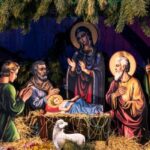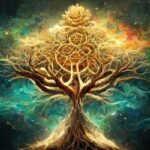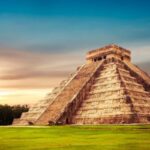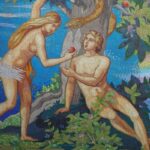We explain what the Christmas tree is, how it originated and what day it should be placed. In addition, we tell you what elements decorate it.

What is the Christmas tree?
The Christmas tree or Christmas tree It is one of the most typical and widely used decorative elements of Christmas. It consists of a tree (ideally a pine, fir or other evergreen species) decorated with lights, ornaments and figures of different types, although in many cases they are made of plastic or other synthetic materials.
Along with the manger or nativity scene, and the figure of Saint Nicholas or Santa Claus, the Christmas tree is one of the central icons of this holiday in the West. The usual thing is that there is one in every home and in every work environment, as a symbol of the arrival of the holidays. Besides, Christmas gifts are usually placed at his feet and family gatherings or celebrations are usually held around it.
The exact meaning of the Christmas tree may be diffuse or vary depending on local tradition, although it is directly connected to the winter imagery of the northern hemisphere. This suggests that its origins are in the north of the European continent, and in the sacred relationship that the different pagan peoples had with trees.
In general terms, the Christmas tree symbolizes hope and life towards the end of the annual cycle (as it is an evergreen tree, that is, it does not lose its leaves in the cold), which in the Christian world coincides with the birth of the messiah, Jesus of Nazareth. There are, however, those who claim that its decoration refers to the apples of the tree in the Garden of Eden, reminding Christians of the biblical myth about temptation and the origin of sin, or that its brightness refers to the star of Bethlehem, located in occasions at the top of the tree.
See also: Christmas
Origin and history of the Christmas tree
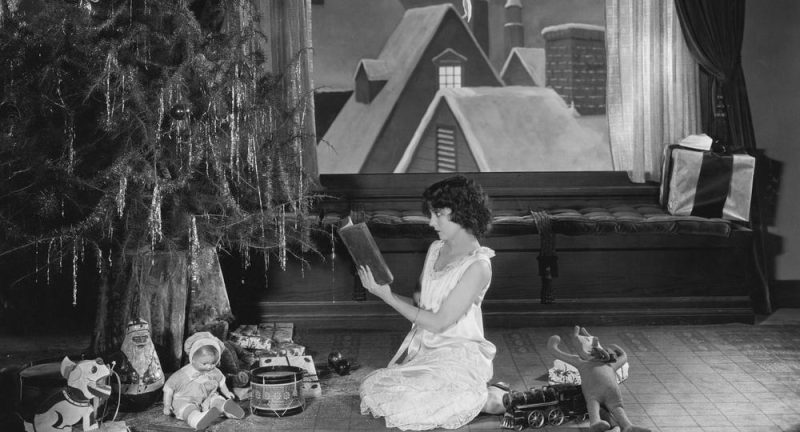
The exact origin of the Christmas tree is uncertain, although many of its cultural roots point to ancient pagan traditions linked to mythology or founding stories. Many of these traditions were absorbed by Christianity during the evangelization of Europe, and resignified to serve a new imaginary.
For example, in Norse mythology there is talk of Yggdrasil, the tree of the universe or the world, in whose crown the gods resided (asgard) and whose roots went into the world of the dead (helheim). Said tree was represented by an evergreen tree during the end of winter, to symbolize the birth of the Sun god, Frey, and with him the resurgence of life on Earth. Once evangelized, These Nordic people replaced their pagan god with Jesus Christ and they continued to commemorate his birth in the same way.
There are legends that claim that the first Christmas tree was cut down by Saint Boniface (680-754) one of the evangelizers of modern-day Germany, to destroy a Norse symbol linked to Thor, and in its place planted a pine tree so that its eternal greenery would remind the Germans of the immortal presence of Jesus Christ. But there are many legends surrounding the origin of the Christmas tree, and it is difficult to verify their veracity.
In any case, the Christmas tree tradition It began to be part of Christian Christmas rites in very recent times. It is thought that the first to do so were the Germans, around the 17th century, and that the tradition settled in Finland, Bohemia, Moravia, England and Spain throughout the 19th century. In the 20th century, this tradition spread throughout much of the world hand in hand with commercial Christmas celebrations, especially inspired by American culture.
What day is the Christmas tree put up?
Christmas tradition dictates that the Christmas tree must be placed (“put together” or “assembled” in some countries) December 8, day of the Immaculate Conception. It was established by Pope Pius IX in 1854, and on that same day the manger must be placed in the house, although the figurine of the baby Jesus must not be in it yet.
However, in many countries this date may vary; In some cases there is no consensus regarding when to put the tree. In other cases, such as In certain Protestant countries, it is celebrated on the first Sunday of Advent a date that varies from year to year, and which must be the fourth Sunday before Christmas.
Christmas tree elements
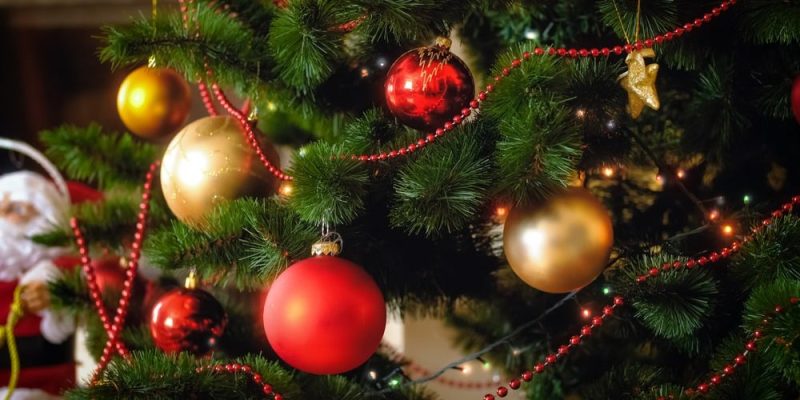
The Christmas tree usually has a very lush decoration, which involves elements such as the following:
- Star. It is generally located at the top of the Christmas tree and refers in the Christian imagination to the star of Bethlehem, which guided the three Wise Men to the shed where the messiah, Jesus of Nazareth, was born. It is generally large in size and can be accompanied by smaller replicas that are located on the branches, like ordinary ornaments.
- Spheres. They are generally balls of bright and metallic colors, which hang from a thread and thus hang from the branches of the tree, as if they were fruits. These decorations can refer to the apple in the biblical story of the Garden of Eden, or consist of symbols of abundance, fertility and a fruitful spring.
- Ties. Traditionally they have been interpreted as symbols of family unity and eternal love, which is why it is customary to include them among the Christmas tree decorations. The idea is that they represent the close union of affection.
- Lights. They are the most common decoration and generally consist of one or several strings of small colored light bulbs, which can remain stationary or turn on and off in waves. In some cases they even bring with them small electronic Christmas music boxes.
- Figurines. They are decorations with specific Christmas shapes: snowmen, reindeer, Santa Claus, sleighs, etc. Its role is to complete the decoration by hanging from the branches of the tree.
- Other decorations. Sometimes the Christmas tree can also include fake snow, garlands, glitter and other decorations that enhance its brightness and striking appearance.
Other Christmas decorations
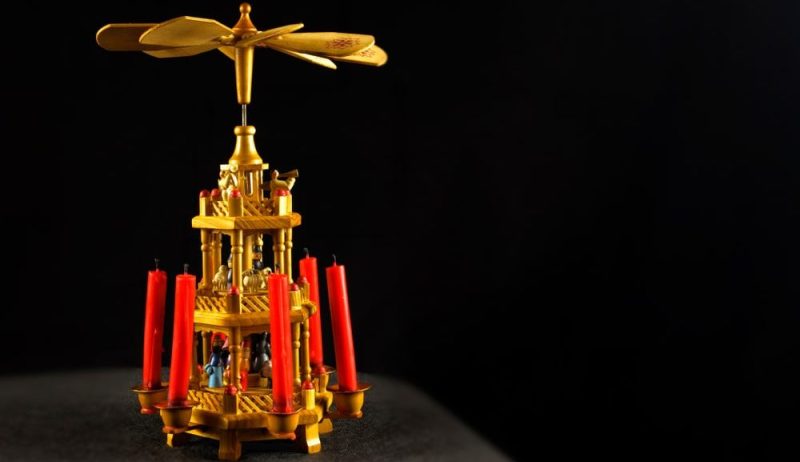
In addition to the Christmas tree, typical Christmas decorations are:
- The manger. It is a miniature representation of the place where Jesus of Nazareth was born: a shed or animal hut, filled with straw and in which were not only Mary and Joseph, parents of the baby Jesus, but also a mule, an ox and sometimes other domestic animals (such as sheep or cows). All of this, along with the Three Wise Men and the Angel of Annunciation, usually appear in the mangers, which are decorated in different ways in the houses when the Christmas season arrives.
- Christmas pyramid. Typical of the regions of Germany and the Czech Republic, among others, it is a kind of tower decorated with lights and ornaments, in which a small wooden carousel rotates, crowned by a propeller at the top that mobilizes the whole thanks to to the heat of four candles lit beneath it.
- Santa Claus. Also called Santa Claus, Old Easter or Saint Nicholas, it is a Christmas icon linked to the giving of gifts (especially to children), created from the figure of Saint Nicholas of Bari, a Christian bishop of Greek origin from the 4th century. It is common at Christmas for his image, dressed in red and with a long white beard, to appear everywhere dragging a sack of gifts, or in charge of a sleigh pulled by reindeer.
- Christmas boots. They are red and white boots that are usually hung on walls and doors in memory of the times when Christmas Eve gifts were left inside for children, as a surprise.
Continue with: Easter
References
- “Christmas tree” on Wikipedia.
- “Christmas decoration” on Wikipedia.
- “Christmas tree: where the tradition comes from and why it is put together on December 8” in Clarín (Argentina).
- “History of Christmas Trees” on History.com.
- “Christmas Tree (holiday decoration)” in The Encyclopaedia Britannica.

